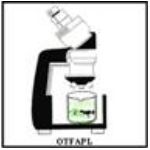AGLS 6502 Course Outline
1. How will the course be conducted?
At the start of the course you will be given the following:
1] Course Outline and Lecture Schedule [which is this document]
2] Your course lectures notes would be obtained from the Course website [you will then print out the material for you to read or you can store it on your computer]
3] The Course Work and Assignments are worth 50% of the Final mark and the Final Exam would be worth 50%.
4] The Assignments are as listed in the table below.
back to top
2. Student Evaluation
| Student Evaluation Activity |
% | Date Due |
| Coursework | 50 | |
| Slide Session Semester Week #2 Wednesday 28th January Questionnaires of the slide session and of the learning outcomes |
2.0 % attendance and submission of a questionnaire | Last Week of Semester |
| Usability Test | 2.00% | Date to be determined |
| Field Trip #1 Semester Week #3 Saturday 7th February Visit to UFS and SFC |
3.0 % [1% Attendance; 2% Report] |
|
| Field Trip #2 Semester Week #3 Sunday 8th February Visit to the Emperor Valley Zoo |
3.0 % [1% Attendance; 2% Report] |
|
| Week End Camp Activity Semester Week #7 Saturday 7th and Sunday 8th March Experience and Write up |
10% The documentation and footage of their Group’s - Camp Setting Up Activity - Fire Establishment - Animal Slaughter and Cooking - Camp Breakdown and Departure |
Week #9 Friday 20th March |
| Course Project Presentation | 5% | Weeks 12 to 13 of Semester |
| Course Project Document | 20% | Friday 17th April, Submitted in Hard Copy and Electronically |
| Evaluation of the Student’s Participation | 5% | Evaluation based on Activity Submission during the preparation of the Course project [to be elaborated on later] |
| Final Exam Written 3 hours |
50 | |
| Total | 100 |
back to top
3. Course Project
The class will be divided into seven (7) animal groupings as follows:
Group #1 - Species Model: The Agouti [Dasyprocta leporina].
Group #2 - Species Model: The Capybara [Hydrochoerus hydrochoeris]
Group #3 - Species Model: The Green Iguana [Iguana iguana]
Group #4 - Species Model: The Opossum [Didelpis marsupialis insaluris]
Group #5 - Aquatic Species Production:
..................Species Model: Cascadura [Haplosternum littorale]
..................Species Model: Tilapia [Tilapia sp.]
Group #6 - Species Model: Quenk [Tayassu tajuca]
Group #7 - Species Model: Boa constrictor [Boa constrictor constrictor]
You will be required to produce a presentation outlining and explaining the production models for the Animal species assigned to your group. Your presentation must include text, flowcharts, pictures and video clips.
The Components of the Project Activity will be as follows:
1. The Group Members
2. The Objectives: to develop Instructional Material for the Production of the species assigned to the Group
3. The Activities in the development of the “Instructional Material” for Marks [5%]
.......a. The Group Development Plan
.......b. The First Draft
.......c. The Second Draft
.......d. The Third Draft
The above will be based on the on line interaction with Dr. Nikov
4. The Presentation [5%]
5. The Formal Report [20%].
back to top
4. Course Learning Material
This course is divided into 5 Modules as seen in the below diagram. The lecture schedule is shown in the following table.
back to top
